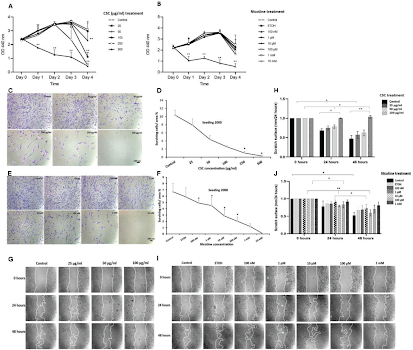Cigarette smoking exposure disrupts the regenerative potential of dental pulp stem cells
- David Ojcius
- Aug 4, 2023
- 3 min read
Introduction: #Smoking is known to alter the regenerative and immunomodulatory properties of many types of mesenchymal stem cells (MSCs). This study investigates the impact of cigarette smoke exposure on the regenerative potential of #dental pulp stem cells (DPSCs).
Methods: DPSCs were treated with various doses of #cigarette smoke condensate (CSC) or #nicotine. Cell proliferation and survival were evaluated by a water-soluble tetrazolium salt (WST-1) and a survival assay. DPSC migration, cytokine expression, mutagenesis, and the signaling pathway were also measured during CSC and nicotine treatment.
Results: Low concentrations of CSC and nicotine did not impair cell proliferation, but higher concentrations reduced cell proliferation. CSC and nicotine could impede DPSC survival and migration in a dose-dependent manner. In addition, the cytokine secretion expression profile was altered with CSC or nicotine treatments. In particular, secretion of IL-6, TNF-α, and IL-10 significantly increased, while TGF-β1 levels showed different patterns after exposure to CSC or nicotine, as shown by ELISA and quantitative PCR. Nicotine treatment increased AKT (also known as protein kinase B) and extracellular signal-regulated kinase (ERK) phosphorylation. Finally, CSC induced higher levels of mutagenicity than nicotine, as shown by the Ames test.
Conclusions: These findings suggest that cigarette smoke exposure alters the regenerative abilities of DPSCs in various ways. Future studies are warranted to further characterize the underlying molecular mechanisms of smoking-mediated damage to DPSCs, which will guide the personalized stem cell treatment plan for smoking patients.
INTRODUCTION
Cigarette smoking ranks as a major public health problem whose negative impacts have spread around the world. Cigarette smoke contains over 4500 chemical compounds, including free radicals and oxidants. These compounds are present in both the gas phase (cigarette smoke extract, CSE) and the tar phase (cigarette smoke condensate, CSC). The gas phase contains metals, a large number of oxidants, and short-lived free radicals, whereas the tar fraction comprises essentially carcinogenic chemicals and long-lived free radicals1. Nicotine concentration is higher in CSC than in CSE2.
While much is known about the effect of smoking on many systemic diseases, little is known about its effects on stem cell therapy. Cigarette smoke exposure impaired mice’s bone marrow mesenchymal stem cell (BMMSC) migration and proliferation3. Endometrial stem cell self-renewal, migration, and osteogenic and adipogenic differentiation were impaired after exposure to CSE4. Human adipose stem cells (ASCs) from smokers failed to improve perfusion in the ischemic limbs of the animals, and were less potent in supporting epithelial cell survival, proliferation, and angiogenesis. ASCs from non-smokers expressed significantly lower levels of stromal-derived growth factor (SDF-1) and hepatocyte growth factor (HGF) compared to cells from smokers5.
The cellular impact of nicotine varies depending on the dose of treatment and the cell type. Nicotine was reported to promote proliferation of mouse embryonic stem cells at 0.01 μM and 0.1 μM, but suppress proliferation at 1 μM and 10 μM6. Proliferation and migration of the bronchioalveolar lung carcinoma cell line A549 was stimulated by 1 μM of nicotine7. In LoVo and SW620 human colorectal cancer cell lines, nicotine (0.1, 1, and 10 μM) promoted migration8. Inhibition of migration was observed in gastric epithelial cells with much higher doses of nicotine (200 μg/mL)9.
Dental origin stem cells, such as dental pulp stem cells (DPSCs) and periodontal ligament stem cells (PDLSCs), have received more attention as sources of stem cells, because of their easy accessibility and comparable properties to BMMSC. There are discrepancies between different reports about the impact of smoking on dental stem cells. It was reported that the cell proliferation of the DPSCs from non-smokers was significantly higher than that of smokers10. Nicotine accelerated proliferation and increased matrix metalloproteinase (MMP)-2 and MMP-28 expression in DPSCs11. PDLSCs isolated from smokers presented reduced proliferation and migration capabilities when compared to cells from non-smokers12. Nicotine was also found to decrease human gingival fibroblast migration rates by 50% at 0.5 μM13. Migration of cementoblasts was reduced by more than 78.4% at 1 mM nicotine14. More research is warranted to valid the impact of nicotine and CSC on dental origin stem cells.
We investigated the impact of cigarette smoke on the regenerative properties of human DPSCs in this research.
Read more at:















Comments